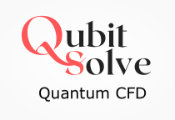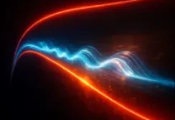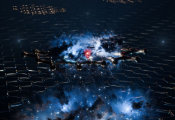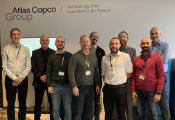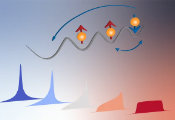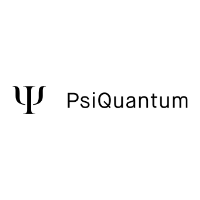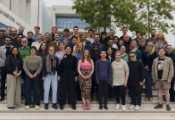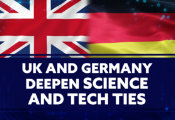Global Quantum Encryption: Small Satellites as Quantum Key Generators
August 11, 2025 -- The QUBE research mission, funded by the Federal Ministry of Research, Technology and Space (BMFTR) and involving researchers from Friedrich-Alexander-Universität Erlangen-Nürnberg (FAU), will use small satellites to test newly developed quantum communication technology in space for the first time. This is laying the foundation for continuing to be able to transfer data securely across the globe in future. Dr. Rolf-Dieter Jungk, state secretary at BMFTR, has now officially launched the first German research satellites.
Quantum key generation involves generating a secure binary sequence, the key, by exchanging very weak light signals. Keys generated in this way can be used to ensure secure communication across the globe between the satellite and several ground stations. QUBE is the first European small satellite to be launched into space, aimed at testing and continuing to develop new components for quantum key generation. QUBE is the size of a shoe box and has a mass of only 3.5 kg. This was achieved thanks to new miniaturization technologies, both for the satellite and for quantum payloads and laser communication terminals.
Complicated steering maneuver and extreme material strain
After years of research, the interdisciplinary consortium QUBE was finally able to generate an optical connection between the satellite and the ground station. During the flyover at a height of 480 km, the position control system must angle the satellite to the ground station to be able to accurately pinpoint the receiving dish with its diameter of 80 cm using the on-board laser. And it must keep this position during the entire flyover maneuver lasting approximately 10 minutes in spite of having a speed of roughly 27,500 km/h. “For satellites of this size, the position control system ensures top accuracy and orientation stability,” says ZfT President Prof. Dr. Klaus Schilling, at whose institute the system was designed and built. DLR project manager Benjamin Rödiger views the demonstration as an important success for optical communication: “We were able to follow the ray of light from the satellite for several minutes. That proves the excellent coordination between position control and the precise programming of our laser terminal and the optical ground station.”
“It really is a milestone, now we can start our work with quantum modules,” explains Harald Weinfurter, Professor of Experimental Quantum Physics at Ludwig-Maximilians-Universität München (LMU). “Our miniaturized quantum random number generator and all other components for quantum communication were developed to ensure that they remain fully functional even under extreme vibration, temperature and radiation conditions when taking off and when being used in space,” explains Prof. Dr. Christoph Marquardt, Chair of Optical Quantum Technologies at FAU. The lessons learned will be borne in mind when constructing the second satellite QUBE-II. “This satellite is more than twice as big. Improved optics and extended quantum modules make a secure key exchange possible,” says Janko Janusch, project manager at OHB and coordinator of the second phase of the QUBE initiative. The launch of QUBE-II is planned for summer 2026.

